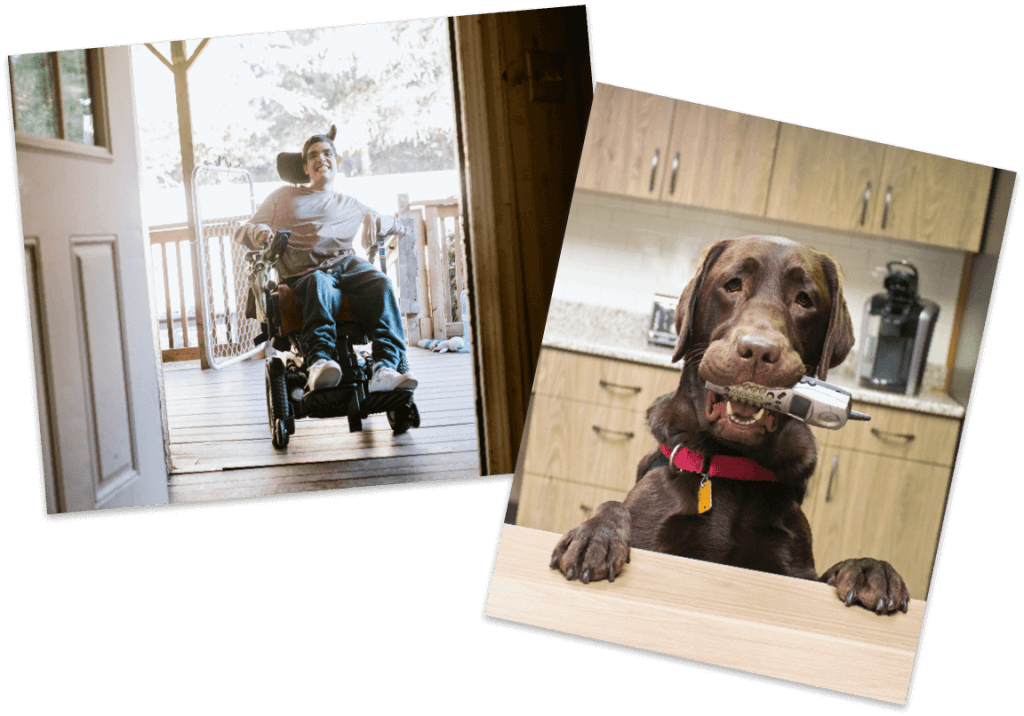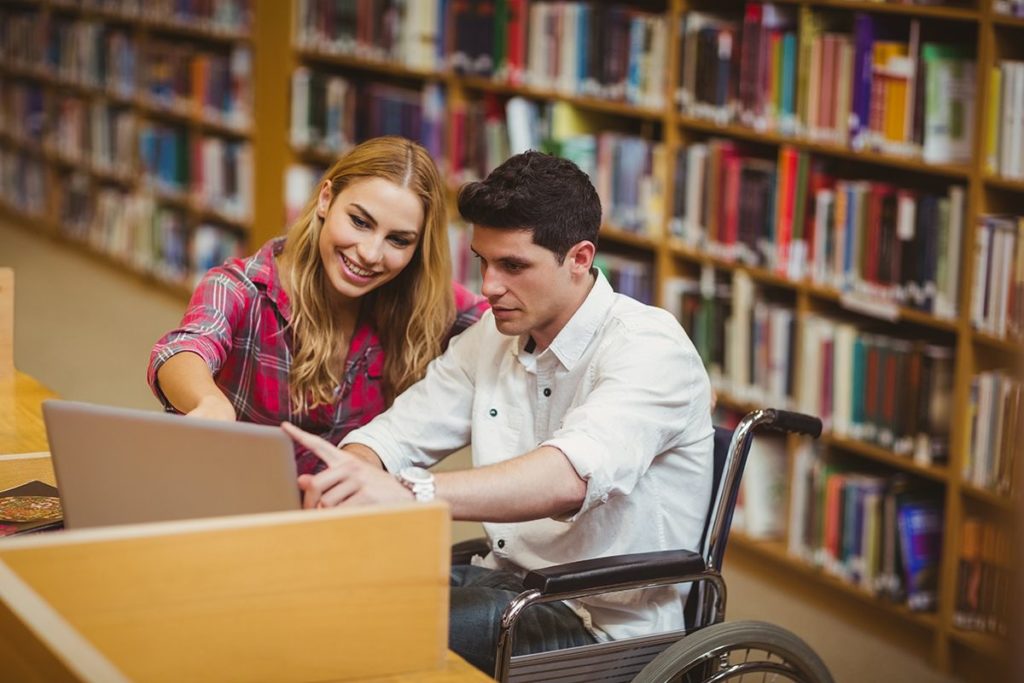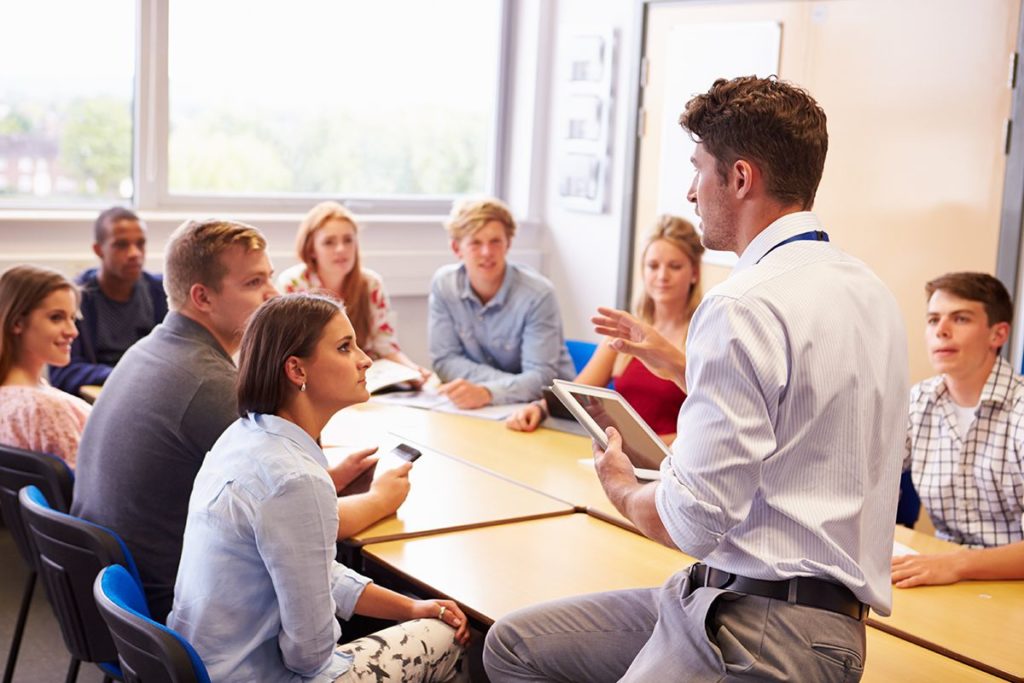While the transition from high school to adulthood can be stressful for anyone, it’s often particularly difficult for students with disabilities. In many cases, they were surrounded by a supportive team of parents and educators who advocated for them. After graduation, however, students with disabilities are often solely responsible for planning their futures and accomplishing their goals.
In this blog, we’ll review some of the most common barriers in the transition for students with disabilities from high school to young adulthood, along with ways that parents and educators can support them.
Not Disclosing Their Disability to Schools or Employers
One of the biggest barriers for students with disabilities transitioning from high school to higher education or the workforce is neglecting to disclose their disability. Once a student graduates from high school, they become responsible for disclosing their disability to their school or employer. Unfortunately, a recent study reported that only one-quarter of students with learning disabilities disclosed their disability to their college.
There are a variety of reasons why young adults choose not to disclose their disability, including:
- Being unaware of the disability services available to them or not knowing how to take advantage of them
- Not wanting to be seen in a negative light by faculty due to their disability or requesting accommodations
- Worrying that professors/employers and other students/coworkers will see them as being lazy or having an unfair advantage
- Not fully understanding the significance of accommodations and how they’ll benefit from them
Not Seeking Accommodations or Modifications
The direct result of failing to disclose a disability to schools or employers is a lack of accommodations or modifications. One study showed that only 19% of young adults disclosed their disability to their employer, and only 5% were receiving accommodations. You’ll find a list of common accommodations below:
- Timing – extended time on tests and frequent breaks
- Auxiliary aids – recording devices, note-takers, sign language interpreters, etc.
- Setting – preferential seating, special lighting, quiet spaces, etc.
- Presentation – large print, designated readers, oral instructions, etc.

UDS Can Help You Live A Fuller Life With Our Comprehensive Services:
Planning & Support – Our dedicated planning & support teams help manage the care and services you need.
Personal Care & Independence – We’ve helped people with disabilities live more independently in their own homes since 1965.
Enrichment & Life Skills – Our variety of programs is dedicated to building skills for living well with a disability.
Not Advocating for Themselves
Another barrier in the transition for students with disabilities from high school is a lack of self-esteem and expectations. They may feel isolated from their peers or that other people don’t understand how their disability affects their everyday life. And while parents and school staff may have advocated for them in high school, they’re suddenly responsible for advocating for themselves after graduation.

However, the opportunity to self-advocate can go a long way towards helping young adults with disabilities develop a growth mindset. The opportunity to face — and overcome — challenges more independently builds confidence and self-worth. Ultimately, learning to self-advocate can make the transition from high school to independent living much easier.
Difficulty Finding Employment
If students with disabilities choose to go directly into the workforce following graduation, they may find it very difficult to secure a job. In fact, the most recent census showed that only 46% of adults with disabilities were gainfully employed, compared to 71% of able-bodied individuals. Additionally, adults with disabilities were twice as likely to drop out of the labor force compared to their able-bodied peers.
There are a variety of reasons why young people with disabilities have trouble finding employment. One of the biggest reasons is lower rates of high school and college graduation. Additionally, stigmas and stereotypes play a large role in why young adults may avoid the workplace. And for those with certain physical disabilities, a lack of accessibility may keep them from finding gainful employment.
Inadequate Transition Services
The Individuals with Disabilities Education Act (IDEA) mandates that any student with disabilities must have an Individualized Education Plan (IEP) by the time they turn 16. IDEA defines transition services (including IEPs) as a “coordinated set of activities…focused on improving the academic and functional achievement of the child with a disability to facilitate the child’s movement from school to post-school activities.” However, these IEPs often aren’t as robust and comprehensive as they should be. We’ll take a closer look at high school transition programs for students with disabilities below.
Individualized Education Program (IEP)
IEPs play an extremely important role when it comes to planning the transition between high school and college or the workforce. And research shows that they significantly increase the odds of students with disabilities taking advantage of accommodations and other disability services.
According to IDEA, IEPs must have a two-part transition plan. The first part of transition plans for adults with disabilities covers postsecondary goals, and the second part covers transition services.
- Postsecondary goals are broken down into four areas: vocational training, postsecondary education, employment, and independent living. When the student graduates, they receive a report detailing their academic/functional skills and recommendations for achieving their future goals.
- Transition services include things like special education, community experiences, college/career counseling, accommodations, and independent living skills. If the student is interested in college or a certain career, they can pursue internships or visit local colleges. Community experiences include activities like volunteering, and independent living skills might include shopping or driving.

504 Plan
Many students with disabilities also benefit from 504 Plans, which are covered in the Rehabilitation Act of 1973. This civil rights law is designed to prevent discrimination against students with disabilities and remove any potential barriers to learning. 504 Plans stipulate that:
- Students have the right to a free public education
- Students have the right to accommodations, and, in some cases, modifications
- Families have the right to be notified if their child is identified to have a disability
504 Plans offer fewer protections than IEPs, requiring schools, parents, and students to be more proactive in the special education process. Schools put together 504 Plans based on factors such as medical diagnoses, grades, and teacher recommendations.
Supporting Students with Disabilities Transitioning Into Adult Life
While there are certainly barriers in the transition from high school to independent living, there are also many ways to support young people as they transition. We’ll take a closer look at how family members and academic institutions can support students with disabilities as they enter adult life.
Family Members
One of the best ways family members can support students as they transition into adulthood is by maintaining an open dialogue with them about their disability and how it affects their life. They should be able to communicate in the best way for them and be able to express their thoughts and feelings openly. Above all, parents should serve as positive adult role models for young adults.
Young adults with disabilities should also have the opportunity to set and achieve goals. This will give them a sense of accomplishment and independence that will carry over into independent living. In other words, families should presume their competence and let them know they believe in them. Parents or guardians should also take an active role in the student’s IEP and work closely with support staff.
Postsecondary Educational Institutions
While students are responsible for advocating for themselves post-graduation, colleges still play an important role in the transition for students with disabilities from high school to adulthood. Here are a few ways they can make the transition to higher education a smooth one:
- Provide readily-accessible information about accommodations and how to apply for them
- Bring attention to disabilities among faculty, staff, and other students
- Make reading and math labs readily accessible for all students
- Offer summer programs for students with disabilities to ease their transition into postsecondary life
- Encourage students with disabilities to join clubs and get involved in on-campus activities